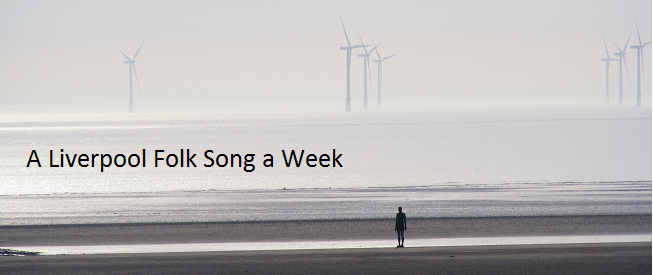Tuesday 31 January 2012
42: Maggie May
A public service announcement warning sailors about unscrupulous brasses, this song is as scouse as scouse. Several versions are given by Stan Hugill in Shanties of the Seven Seas, and the song retained a popularity well into the 1960s as a standard for skiffle groups - The Beatles, recalling it from their skiffle days as The Quarrymen, recorded a fragment of it on Let It Be.
As a town catering for sailors, Liverpool was riddled with prostitutes. As the sign above suggests, it's not without them today. A popular topic of conversation surrounding this song is whether Maggie May was a real person or simply an archetypal lady of the night; Hughie Jones of the Spinners remarks: "My first job was as an office boy in Duke Street and I’d heard the rumour that Maggie May lived at number 17. One day somebody came in and said a funeral has just gone by and it was Maggie May and that was in 1952. I thought that can’t be true because I’ve always known the song... Was she still alive in the 50s? It is possible. Maggie May had many contemporaries of course. One was called Jumping Jenny and the famous one was The Battle Ship, pretty ominous really."
Maggie May is #1757 in the Roud folksong index.
Saturday 21 January 2012
41: The Swan Swims So Bonny
Another version of a ballad in Francis Child's The English and Scottish Popular Ballads - Frank Kidson collected this version of "The Two Sisters" from "an Irishman in Liverpool", and the tune, together with a fragment of the words, was published in The Journal of the Folk-Song Society Vol. 2 No. 9. Later, he published the song with an expanded set of words from a variety of sources in A Garland of English Folk-Songs. This murder ballad has a long history as part of English and Scottish tradition, and almost certainly predates its first appearance in print as a 1656 London broadside. Child also notes that the the tale appears appears on the European continent, with Swedish, Norwegian, and Slovenian versions. Kidson says that "the story almost invariably is to the effect that a woman, jealous of her sister, pushes her into a stream near a mill-dam. The half-drowned sister is discovered by the miller's daughter, who calls to her father that there is either a swan or a lady in the water... afterwards a harper, passing along, finds the lady's body and from her anatomy makes a harp... stringing it with her long yellow hair, making the wrst pins from her finger bones, etc. The harp being placed on a stone begins to play of its own accord, and denounces the sister".
The picture above is of Maurice Ferrary's sculpture "Leda and the Swan" at the Lady Lever Art Gallery. Ok, so it's about a different myth (that of Zeus seducing Leda after visiting her in the form of a swan) but I think the representation of deceit and of the merging of woman and swan fits very nicely with this ballad.
The Swan Swims So Bonny (often called "Binnorie", "The Two Sisters" and many other things) is #8 in the Roud folksong index.
Monday 9 January 2012
40: Back Home To Bootle Again
I heard this fine pub-crawling song at a singaround a while ago, but didn't know the source of it until I saw it on Billy Maher's "Songs of Liverpool" CD. The song is by Joe Orford, who lives in Crosby I believe, and has written a number of fine songs with a local flavour.
The photo above is a 1965 shot of the entrance to Hackins Hey off Dale Street. Taken by Pat Weekes, it comes from the "Streets of Liverpool" website. Anybody "drinking their way along Hackins Hey" shouldn't find it too hard these days - as far as I'm aware, there are only three pubs along there at the moment - The Saddle Inn, Ye Hole In Ye Wall (Liverpool's oldest pub, opened back in 1726), and The Jupiter. However, this medieval lane has always been an important place of business in the town - what better place, then, for the important business of a piss up? Even if it is a long and winding way home on the bike to Bootle.
Subscribe to:
Posts (Atom)



